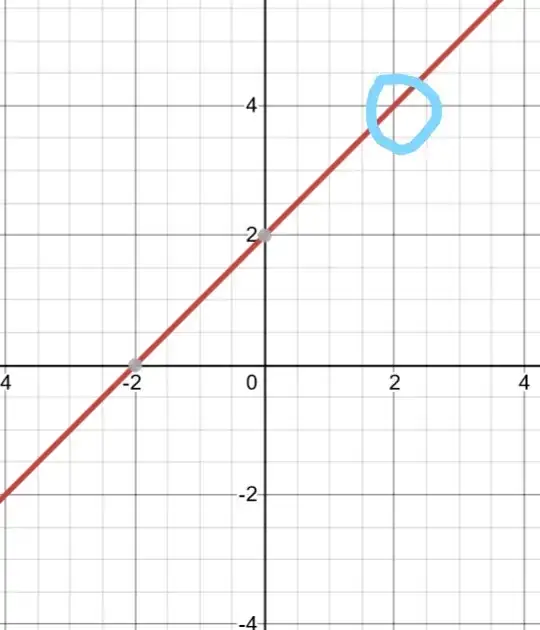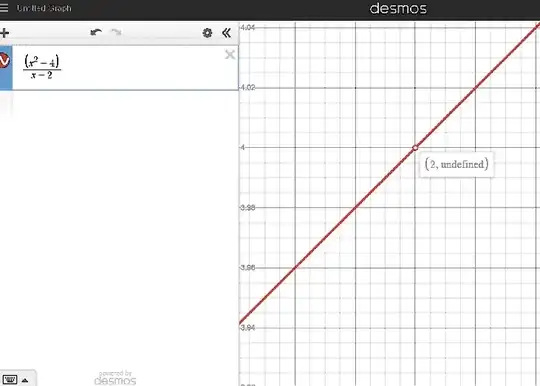I'm sorry if I sound naive but I have recently studied the topic of limits in high school and didn't understand something.
I understand that we need limits for determining undefined values like $\frac{0}{0}$, ∞/∞ ,1 raised to ∞ etc,but why do we have these ambiguities in the first place?And why are these ambiguities found only analytically and not graphically?
For example:
The function f(x)= $\frac{\left(x^{2}-4\right)}{x-2}$ is not defined at x=2 because it gives $\frac{0}{0}$. So here's the ambiguity in the analytical method but why does the graph of this function looks perfectly fine and gives the correct value f(2) = 4? The graph:
It clearly shows the f(2)=4. Why no ambiguity here?
Edit: I want to understand does this have any mathematical significance/meaning? Or is it just that the graph/graphing software literally skips over these values?
Edit 2: But some people also give reasons like the functions isn't in its simplified form and on simplifying $\frac{\left(x^{2}-4\right)}{x-2}$ using $a^{2}-b^{2}$= (a+b)(a-b) we will get $\frac{\left(x-2\right)\left(x+2\right)}{x-2}$ = x+2 and so f(2)=2+2=4. Where's the ambiguity here?

